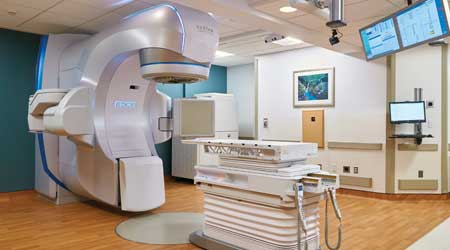 For the replacement of a linear accelerator at the University of Maryland Medical Center, the first step in the design assist process was a kick-off meeting on the job site with all stakeholders involved — crucial to getting all parties on the same page.RMF Engineering and Lenny Casper Photography
For the replacement of a linear accelerator at the University of Maryland Medical Center, the first step in the design assist process was a kick-off meeting on the job site with all stakeholders involved — crucial to getting all parties on the same page.RMF Engineering and Lenny Casper PhotographyHow Design Assist Can Help Meet Tight Construction Deadlines
When time is of the essence, the design approach project delivery method gets all parties to collaborate efficiently, resulting in money-saving projects.
The design assist approach can save time, money and deliver a successful project for the owner. This delivery method includes bringing on the construction team during the design phase to collaborate with the engineer of record. This includes trade subcontractors to actively participate in generating the design documents. If all parties involved understand the challenge ahead and there is complete buy-in, then all share the challenge.
A 2017 project with the University of Maryland Medical Center (UMMC) is a good example of design assist. The RFP scope of work wasn’t anything out of the ordinary. The job required the replacement of a linear accelerator (Linac) machine on the lower level of the imaging suite at UMMC in downtown Baltimore. However, with a required start date of January 27, 2017, and equipment delivery date of March 10, 2017, the project had an exceptionally tight timeline.
The RFP said: “the design will take place at the table with the contractor and will be a joint venture between UMMC, the design and construction teams.” This joint venture — also known as the design assist delivery approach — would prove to be the appropriate method for successfully completing the project for UMMC.
Getting off to a good start
The first step in the process was to hold a kick-off meeting on the job site with all stakeholders involved. The importance of the first day/project kick off cannot be underestimated. This is a day to get all parties on the same page and ensure the involved teams are off to a good start. This is also an opportunity to communicate any key mandatory milestone dates. For example, the UMMC project team learned at this meeting that an extra month was added to the timeline and was informed of critical shipping dates for the Linac from the Varian factory that would affect construction dates.
From this meeting, the design assist schedule was generated. Typically, after this meeting the team would walk the job site and create standard mechanical, electrical, and plumbing demolition drawings. Unfortunately, the contractor had already begun to demolish the room’s equipment, ceilings where down, the overhead HVAC and electrical services had begun to be demolished, and the room’s existing Linac equipment had been removed. The only solution was “reverse engineering” — in other words, discuss and observe on-site and document later back in the office.
At every stage of the project, time was of the essence. Another wrench was thrown into the process when the team found out that the existing building drawings were inaccurate.
This was the first real test to the design assist approach. To install Linac machines, the floor has to be trenched to provide the electrical and water piping services access into the base of the machine. The structural drawings indicated a 12-inch concrete thick floor slab. In reality, however, the slab was found to be approximately 24 inches of concrete, which resulted in extended demolition time — potentially delaying the overall project schedule. Dealing with the problem required the project structural engineer to and provide real time engineering side by side with the on-site contractor. The solution to make up for lost time was a special, high-strength concrete mix that reduced curing time to meet the milestone dates and stay on schedule.
Related Topics:











